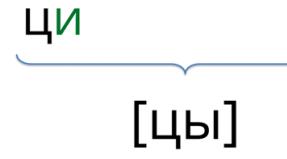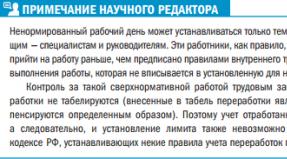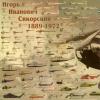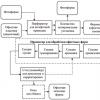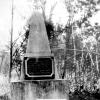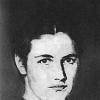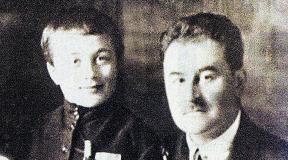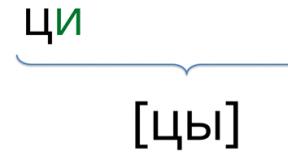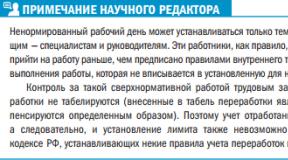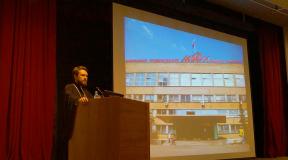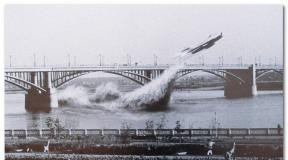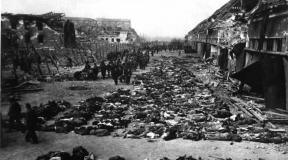Hero of the Civil War, commander of the Tunguska partisan detachment. Georgy Turovnik. Dark spots of Civilian Heroes. The party center and the military-revolutionary headquarters were faced with new tasks. It was necessary to unite and make more purposeful
The partisan movement in the Urals, Siberia and the Far East arose in the summer of 1918. Many Red Guard units, defeated in battles and cut off from Bolshevik Russia after the Czechoslovak rebellion, switched to partisan tactics of resistance to the Czechs and White Guards.
At the end of 1918 - beginning of 1919, the first uprisings of workers and peasants mobilized into Kolchak’s army broke out in Omsk, Kansk, Yeniseisk, Tyumen and other places, which were brutally suppressed. Large partisan forces arose in the Urals, where in the Shadrinsky district alone there were over 1,000 partisans. In the Semipalatinsk region, partisans operated under the leadership of the Bolshevik K. A. Vaitskovsky, and there were large detachments in Semirechye and other areas. The partisan movement reached its greatest extent in the Altai and Yenisei provinces. In the Ziminsky district of the Altai province, partisan detachments were commanded by K. N. Brusnetsov. In the Altai province in the summer of 1919, individual peasant rebel detachments united into the West Siberian Peasant Red Army, led by E. M. Mamontov and I. V. Gromov, which operated very successfully in the Slavgorod - Kamen - Aleysk - Rubtsovsk region. The Chumysh partisan division under the command of M.I. Vorozhtsov operated in the northeastern part of the Altai province, and the Gorno-Altai division operated in the mountainous regions. In the Yenisei province in the spring of 1919, the 1st Peasant Army was created from separate detachments under the command of A.D. Kravchenko and P.E. Shchetinkin, whose headquarters were located in the village. Steppe Badgey. South-east of Yeniseisk, in the Taseevskaya volost, at the beginning of 1919 the Taseevskaya Soviet partisan republic arose. The detachments of Taseev partisans under the leadership of V. G. Yakovenko, P. I. Denisov and I. Z. Nizhegorodov numbered several thousand fighters. The partisans also operated in the Kuzbass, in the areas of Taishet, Tomsk, Cheremkhovo and Irkutsk, significantly paralyzing traffic on the Siberian Railway.
In the fall of 1919, Kolchak’s rear in Siberia was completely disorganized. About 100 thousand Siberian partisans, even before the approach of the Red Army, liberated vast areas of Siberia from the White Guards.
The Far East, occupied by Japanese, American and other invaders, was the scene of a long partisan struggle. In Transbaikalia in the fall of 1919, stubborn battles with Japanese troops and the detachments of Ataman Semenov were fought by 1 infantry and 7 cavalry regiments (about 3 thousand partisans) under the command of P. N. Zhuravlev. At the beginning of 1920, the increased partisan forces were reorganized into 2 corps. Prominent leaders of the Transbaikalia partisans were Ya. N. Korotaev, F. A. Pogodaev and M. M. Yakimov. In October 1920, partisans helped the People's Liberation Army of the Far Eastern Republic dislodge the Semyonovsky units from Chita. In the Amur region, at the beginning of 1919, under the leadership of the General Staff, headed by F.N. Mukhin, 8 thousand fought. partisan army, commanded by G. S. Drogoshevsky, I. G. Bezrodnykh and others. In the summer of 1919, the partisan struggle was led by the “Military Field Collective of the Amur Region” under the leadership of V. A. Borodavkin, and then S. S. Shilov. In February 1920, 20 thousand. The partisan army liberated the Amur region. The partisan detachments of D. I. Boyko-Pavlov, I. P. Shevchuk, M. Izotov and others fought in the Amur region.
The most important area of the partisans' struggle against the interventionists and White Guards was Primorye. Here in the ranks of the partisans there were many Vladivostok workers, Suchan miners, and railway workers. In May 1919, the Far East Committee of the RCP (b) sent S. G. Lazo, M. I. Gubelman, I. M. Sibirtsev, A. A. Fadeev and others to the partisan areas. S. G. Lazo became the commander-in-chief of the partisan forces. Despite some setbacks, in the fall of 1919 the partisans liberated many areas of Primorye. At the beginning of 1920, the power of the White Guards in Primorye was overthrown, and the partisans occupied Vladivostok and Khabarovsk. The partisan movement in Primorye resumed after the Merkulov coup (May 1921). A.P. Lepekhin was appointed commander. At the end of 1921, up to 3 thousand partisans operated in Primorye. The actions of the partisans in Southern Primorye provided great assistance to the People's Liberation Army of the Far East in the fight against the interventionists and White Guards, who fled from the Far East in October 1922.
The partisan movement, which embraced hundreds of thousands of workers and peasants, was of great importance for disorganizing the rear of the interventionists and White Guards and, in combination with the military operations of the Red Army, led to their complete defeat. The partisan movement was predominantly peasant. Often the actions of the partisans were coordinated with rebel actions in cities, strikes, sabotage of railway workers, etc. The partisan movement mainly developed under the slogan of restoring Soviet power. The deployment of the mass partisan movement was largely determined by the specific socio-economic and geographical conditions of various regions and the balance of forces. For example, the partisan struggle against the interventionists in the Far East was characterized by a combination of class and national liberation struggle. In Siberia especially, as well as in other regions, the ranks of the partisans and the leadership of the detachments included, in addition to communists, Socialist Revolutionaries, nationalists and anarchists.
After the defeat and expulsion of the White Guards from the territory of Siberia and the Far East, a significant part of the partisans again took up arms, having experienced the “charms” of the Bolshevik regime. The first to break out in early May 1920 was a rebellion that engulfed the so-called Prichernsky region: the eastern part of Barnaul district and the adjacent areas of Biysk, Kuznetsk and Novo-Nikolayevsky districts. It was prepared and led by a group of former partisan commanders who had previously fought against Kolchak. The most famous among them were G.F. Rogov, I.P. Novoselov, P.F. Leonov and I.E. Sizikov, anarchists in their views. In assessing the number of participants in the Rogov rebellion, which received this name after its main leader, the military command and the Altai gubchek differed significantly. If the first named the figure of 800 people, then the chairman of the gubchek, I.I. Karklin, argued that their number was about 2 thousand people.
The liquidation of the "Rogovshchina" was nearing completion when, at the end of June - beginning of July 1920, the population of Steppe Altai rebelled. Initially, the new rebellion covered Aleksandrovskaya, Alekseevskaya, Klyuchevskaya, Mikhailovskaya, Pokrovskaya, Rodinskaya and Sosnovskaya volosts, located at the junction of Zmeinogorsk, Slavgorod and Semipalatinsk districts. Then the uprising began to rapidly spread in the northern and northwestern directions, capturing the southeastern part of Pavlodar district. The rebels formed the People's Rebel Army, which had 12 regiments. According to estimates from the headquarters of the 26th Soviet Rifle Division, the number of the People's Insurgent Army reached 18 thousand people. The key figures among its commanders were the former commissar of the 1st Altai Regiment of the Partisan Army E.M. Mamontova F.D. Plotnikov (a resident of the village of Vysokoye, Borovsky volost, Barnaul district, a poor man in terms of his property status) and a native of the village of Yamyshevskaya, Pavlodar district, captain D.Ya. Shishkin.
The uprising in the Steppe Altai was nearing its climax when two more major revolts broke out in Western Siberia. First, in early July, the population of several volosts in the northern part of the Novo-Nikolaevsky district rebelled, which were soon joined by residents of the adjacent volosts of the Barabinsky (Kainsky) district and the Zaobskaya part of the Tomsk district. Due to the fact that the rebels, having captured the city of Kolyvan, tried to turn it into their administrative “capital,” the rebellion was called the Kolyvan rebellion. There is no reliable information about the total number of its participants in the documents of Soviet authorities. Judging by the scattered data contained in the reports of the commanders of the units of the Soviet troops that suppressed the Kolyvan uprising, the number of its participants hardly exceeded 5 thousand people. The initiators of the Kolyvan uprising and its main military leaders were peasants and employees of the village of Vyuny, Chaussky volost, as well as the son of the Kolyvan homeowner V.A. Zaitsev.
The second uprising broke out in mid-July in the southern part of Ust-Kamenogorsk district. Initially, it covered Cossack villages and villages located in the Bukhtarma River basin (hence the name Bukhtarma that stuck to it). Subsequently, the population of several volosts of Zaisan and Zmeinogorsk districts joined the rebels. The rebel detachments made up the People's Army numbering 2.5 - 3 thousand people. The center of the uprising was the village of Bolshe-Narymskaya, where the headquarters of the People's Army was located, headed by its chief A.S. Bychkov, as well as a temporary rebel committee that tried to take charge of civil affairs.
The last, fifth, major uprising in Western Siberia in 1920 occurred on the 20th of September in the Mariinsky district. It captured Koleulskaya, Kolyonskaya, Malo-Peschanskaya, Pochitanskaya and Tyumenevskaya volosts, located north of the Trans-Siberian Railway in the interval between the Berikulskaya and Izhmorka railway stations. The preparation and implementation of the rebellion was led by the former commander of the partisan detachment, a middle peasant from the village of Svyatoslavka, Malo-Peschansky volost, P.K. Lubkov, after whom this performance is called. The number of rebels in the documents of military and Soviet authorities is determined to be 2.5 - 3 thousand people.
In the fall of 1920, Eastern Siberia seemed to take over a kind of relay of uprisings from Western Siberia. The first unrest began here in September 1920 in the Tagninsky volost of Balagansky district. In the second half of October - early November, rebellions engulfed an impressive territory located at the junction of Balagansky, Irkutsk and Cheremkhovo districts, which included Golumetskaya, Dmitrievskaya, Evseevskaya, Zalarinskaya, Idinskaya, Kakhinskaya, Molkinskaya, Novo-Udinskaya, Osinskaya, Tikhonovskaya and Uleyskaya volost. At the same time, armed uprisings took place in Verkholensky (Anginskaya, Biryulskaya, Kachugskaya, Kulengskaya volosts) and Kirensky (Kazachinskaya, Martynovskaya volosts) counties. The number of rebels in each of these volosts, as a rule, ranged from one to three hundred people. The most famous and authoritative leader of the rebels of the first region was the poor peasant of the Evseevskaya volost, non-commissioned officer D.P. Donskoy, in the second district - N.P. Bolshedvorsky, who in 1917 was the commissar of the Provisional Government of Verkholensky district and the head of the district administration of the Provisional Siberian government in the second half of 1918, as well as a resident of the suburban village of Kurtukhai A.G. Cherepanov, who had a large peasant farm, was also engaged in trade and was a co-owner of the pier in Kachuga.
In mid-October 1920, a rebellion broke out in the northwestern part of the Krasnoyarsk district, in which the population of Zeledeevskaya, Mikhailovskaya, Mininskaya, Pokrovskaya, Sukhobuzimskaya, Sherchulskaya and Shilinskaya volosts took part. In early November, uprisings took place in the Nazarovskaya, Podsosenskaya, Serezhskaya and Yastrebovskaya volosts of Achinsk district, and in mid-November - in the Amonashevskaya volost of Kansk district. In each of the three districts the number of rebels did not exceed a thousand people. Perhaps the largest figure among the rebel leaders of the Yenisei province was Colonel A.R. Oliferov. The detachment he commanded during the autumn of 1920 - spring of 1921 successively fought through the Krasnoyarsk, Yenisei, Tomsk, Mariinsky, Achinsky and Minusinsk districts.
Based on the available data - scattered and very approximate - it is impossible to give an exact number of rebels. The total number of rebels in Siberia in 1920 can only be approximately determined. Most likely, it ranged from 27 to 35 thousand people.
Of course, the partisans had no shells at all, so they fired from such artillery with homemade cannonballs and scrap metal, as well as stones sewn into felt.
There is a funny episode:
After the unsuccessful partisan offensive in September, there was no longer any calm. The White Guards launched continuous gunfire at the positions of the Cherkassy people. In the weapons workshops, the partisans made two guns from metal water pipes - a six-inch and a three-inch. These guns were loaded with scrap metal sewn into felt. During the shooting, the noise was enormous, thick smoke obscured all spaces. These weapons caused great panic among the White Guards; Ataman Annenkov himself reported in a telegram to Semipalatinsk:
“On September 4, in the area opposite the trenches, the Reds released two waves of suffocating gases, the color and smell were chlorine. The effect of the gases has not yet affected. The gases were brought from Verny.”
When the “secret of the gases” was discovered, the White Guards began firing at them with hundreds of shells, and the Cherkassy people had to transfer weapons from place to place.”
K. Tulekeeva. Cherkasy defense. Alma-Ata, Kazgosizdat, 1957. P.86.
Partisans of the Far East go to fight Semyonov.
From the book: I.Ya. Tretyak. Partisan movement in the Altai Mountains. 1919. Novosibirsk, 1933. The author is the famous commander of the “First Mountain Mounted Partisan Division”
“The economic unit at the division headquarters began to receive and record various property taken from the counter-revolutionary population who fled to Kolchak’s units. To organize a chemical workshop, the economic unit began to take away gunpowder, caps, cartridges and other military property from the population.
The partisans also spent their rest from hostilities doing business. Whoever tried their best to strengthen the combat capability of their unit. Malo-Baschelaksky partisan, mechanic Comrade. Strelnikov, who was helped by others, made a cannon in the forge from a sawn-off iron pipe. The division headquarters decided to see how the gun they made would fire. On a flat area, opposite the mountain where the projectile was supposed to fly, on reinforced iron trestles lay a meter and a half long and four inches thick, an iron edge, tightly and tightly compressed by several iron rings so that it would not be torn when fired. The opening of the internal passage was small. Inventor Comrade Strelnikov began to tightly stuff the inner hole with various iron scraps and nails, then he poured in a portion of gunpowder, sealed it well and lit the small wick leading to the gunpowder.
Fearing an accident, we moved two fathoms away. A deafening shot rang out, the echo of which echoed far across the mountains. Together with the shell, the cannon itself was thrown two fathoms forward. After the shot, the partisans went up the mountain to see where the iron scraps and nails that Comrade. Strelnikov loaded his homemade cannon. It turned out that many cuttings and nails, having flown more than six hundred steps, were firmly embedded in the tree trunk" (pp. 84-85)
“In connection with the increase in the manpower of the partisan regiments, the department also required a clearer organization of the work of the economic department. Circumstances strongly pointed to the need to organize auxiliary workshops, such as weapons repair, shoemaking, sewing, etc. The headquarters together with the head of the economic department Part of T. A. Trepin had to get down to work.
Particularly distinguished was the rifle repair shop under the leadership of Comrade. Zakharov, who knew the chemical business well. With the help of one German prisoner of war, this workshop soon became not only a weapons repair shop, but also a chemical one. The workshop repaired finished weapons, and also manufactured and filled cartridges, for which, after battles, the partisans were required to select cartridges. Capsules were also made in the workshop. They even came up with a special method for producing gunpowder. This chemical workshop was greatly assisted by the mountain peasant population engaged in hunting. Since pre-war times, it has retained some reserves of gunpowder, tin, lead and other material suitable for the manufacture of ammunition. After the appropriate appeal from the headquarters, the peasants willingly brought and handed over the materials they had remaining to the economic department. However, sometimes it was necessary to use coercive measures, since there were those who evaded handing over their remaining reserves; searches were carried out from such persons and hidden gunpowder, tin, lead, and capsules were taken away.
Sewing workshop comrade. Sharomova was staffed by knowledgeable artisans. Old, worn clothes were repaired here. Subsequently, the workshop began sewing uniforms for partisans on a large scale, as well as producing new sheepskin sheepskin coats. The partisans in the village of Ongudai also staffed a shoe repair shop" (p. 113).
Mounted partisan detachment N. Kalandarishvili. Photo by S.I. Nazmov. 1920s.
The legendary "Grandfather", leader of the partisans - Nestor Kalandarishvili
Nestor Aleksandrovich Kalandarishvili born in the village of Shemokmedi, according to other sources - in the village of Kviriketi, Ozurgeti district, Kutaisi province (now in Georgia). He graduated from a rural school, then from Kutaisi gymnasium. He studied at the Tiflis Teachers' Seminary (with a break for military service in 1895-1897), from where he was expelled in 1903.
In 1903, N. A. Kalandarishvili joined the Socialist Revolutionary Party. Participated in the Gurian Peasant Uprising (1905-1906). He took part in the transportation of weapons from abroad and in terrorist actions. In 1907 he was arrested and deported to Siberia, where he served exile until February 1917. From 1908 he lived in Irkutsk, was engaged in photography and worked in the cultural and educational society "Knowledge". He was suspected of committing a number of major criminal offenses, including: receiving funds through a false appropriation from the management of the Trans-Baikal Railway, organizing an assassination attempt on the Irkutsk merchant Ya. E. Metelev, manufacturing counterfeit coins and banknotes on an industrial basis in the house of G. M. Kotikov . In 1911, he was arrested by the Irkutsk provincial gendarmerie and served his sentence in the Irkutsk prison castle until November 28, 1912. On December 18, 1913, N. A. Kalandarishvili was detained on suspicion of involvement in a predatory organization of Caucasians, and was released from custody in the fall of 1914.
In 1917, he joined the anarchist party and organized the Caucasian cavalry squad of anarchists in Irkutsk. From February to July 1918 he commanded detachments of troops in Central Siberia. At the beginning of October 1918, Kalandarishvili’s troops were defeated near Troitskosavsk (now the city of Kyakhta in Buryatia).
In March 1919, N.A. Kalandarishvili established cooperation with the Irkutsk Committee of the RCP (b). Kalandarishvili’s detachment, provided by the Committee with funds, weapons and people, was supposed to carry out tasks on the section of the railway from Baikal to Zima station. In the spring and summer of 1919, the anarchist detachment was based 70 versts west of Irkutsk and operated in the Kitoi River basin. During the summer of 1919, the detachment derailed 8 trains and destroyed the railway bridge across the Kitoi River. A.V. Kolchak placed a reward of 40 thousand rubles on Kalandarishvili’s head.
At the beginning of January 1920, N.A. Kalandarishvili took a direct part in the establishment of Soviet power in Irkutsk. In March-April 1920, he commanded the Verkholensk group of Soviet troops, and from May 1920 he commanded the cavalry units of the People's Revolutionary Army of the Far Eastern Republic (FER). In April 1920, as part of the Far Eastern Republic, he took part in battles with Ataman Semenov, where he proved himself to be a brave and competent commander. In battle with the Japanese he was wounded several times. After treatment, he went to Moscow.
In August 1920, he was a representative of the Ministry of Foreign Affairs of the Far Eastern Republic at the Chinese military mission in Moscow. Since October 1920 - commander of the Korean detachments of the Far East, since December 1920 - commander of the troops of the Yakut region and the Northern Territory.
In 1921 he joined the RCP(b).
In January 1922, N.A. Kalandarishvili, at the head of a detachment of three hundred volunteers he formed, set out from Irkutsk to suppress the White Guard uprising in Yakutia. On the Khakhsyt channel near the village of Tehtyur, 38 km from Yakutsk, he was ambushed and killed. He was buried on April 2, 1922 in Yakutsk. On September 17, 1922, he was reburied at the Jerusalem Cemetery in Irkutsk.
Awards:
- Order of the Red Banner (1922)
Headquarters of N.A. Kalandarishvili. 1920
1922 Funeral of the commander of the 6th partisan detachment Anisimov M.A.
ANIKEEV (Anisimov) Mikhail Andreevich (1888, Zlatoust - 1922, Suchan) - hero of the civil war in the Southern Urals and the Far East. Worker at the Zlatoust Mechanical Plant (1905–1917). Member of the RSDLP since 1906. Member of the revolutionary underground, was arrested for revolutionary work. Since 1918, commissar of the Zlatoust district police, since July - in the Red Army: employee of the special department of the 30th Irkutsk Rifle Division (1918–19...?), regimental commissar, head of the state political security (Cheka) in Transbaikalia (1920), head of the state political security of Vladivostok (1921). During the counter-revolutionary rebellion he was arrested. He ran. Organized and led partisan detachment No. 6, which actively fought against the Japanese occupiers. Heavily wounded, died after amputation of his leg. Posthumously awarded the Order of the Red Banner. The same order recognizes the merits of partisan detachment No. 6, whose banner is kept in the Museum of the October Revolution in Moscow. In honor of M.A. Anikeev named streets in the cities of Zlatoust and Partizansk, as well as the village of Anisimovka in the Primorsky Territory.
Documents from the state archive of the Jewish Autonomous Region
Resolution on issuing a partisan ticket to citizen Urtaev. 1920s.
Shevchuk's detachment D.L.
After the October Revolution of 1917, armed uprisings by its political opponents began against Soviet power. At the end of October and November 1917, Red Guard detachments loyal to the Soviet government suppressed anti-Bolshevik protests in Petrograd, Moscow and other places. The performances were the first flashpoints of the civil war, which soon engulfed the entire country.
In March 1918, at the London Conference, the leaders of the Entente countries decided to provide assistance with their military forces to the Volunteer Army. Allied troops landed on March 15, 1918 in Murmansk, and on April 5 in Vladivostok. This city was declared an “international zone,” and Japanese and American military units landed there.
On May 25, 1918, the uprising of the Czechoslovak Corps began. The uprising activated anti-Bolshevik forces, raising them to armed struggle.
As the armed confrontation between the Bolsheviks and the White Guards intensified, the question arose of replenishing food and human resources. The government led by Denikin decided on a general mobilization of the population and confiscation of food for the needs of the army, thereby causing a wave of discontent among the peasant population. At the same time, on May 29, 1919, the All-Russian Central Executive Committee Decree “On forced recruitment into the Workers’ and Peasants’ Red Army” was adopted. The mass mobilization undertaken by the Bolsheviks was not perceived negatively by the peasantry, unlike the mobilization carried out by the White Guards.
The decisive factor in undermining the reputation of the “white” movement was the punitive detachments that were sent to the villages to pacify discontent among the peasants.
On the territory of the future Jewish Autonomous Region, during the Civil War of 1918-1922, two partisan detachments operated: Kuldursky and Tungussky.
The Kuldur partisan detachment was created in 1919 by Fyodor Vorobyov. He became its first commander. In 1919, Vorobiev was betrayed as a provocateur and shot by the Japanese. The detachment, numbering 19 people, operated between Obluchye and Tikhonkaya stations.
The Tunguska partisan detachment was formed by Ivan Pavlovich Shevchuk in 1918. The detachment received its name from the Tunguska volost of the Khabarovsk district, located along the left tributary of the Amur - the Upper Tunguska River. The detachment's base was in the village of Arkhangelovka, where Shevchuk lived. His detachment, which at the beginning of 1919 consisted of several dozen people, by the end of the year reached a thousand infantry and cavalry people.
Shevchuk brothers. From left to right: 1st - Maxim Pavlovich, 2nd - Vasily Pavlovich,
3rd - Ivan Pavlovich. 1923
I.P. Shevchuk is the commander of a partisan detachment. photo 1940s.
David Leontievich Kucheryavy served at the depot of the In Ussuri Railway station until 1918 as a train fireman. With the arrival of the White Guards, he was dismissed as involved in Bolshevik activities, after which he joined the detachment of I.P. Shevchuk.
About the partisan detachment of Shevchuk D.L. Kucheryavyi writes: “...in 1918, Shevchuk organized a partisan detachment on the Tunguska River in the village of Arkhangelovka. At the beginning there were 15 people in the detachment, but the detachment grew, and by the end of the year there were already 60 people.”
The actions of the partisan detachments were in the nature of local skirmishes with Kolchak’s detachments and Japanese interventionists. As the underground movement developed in the region, communication between disparate groups improved, thereby increasing the chances of successful military operations.
A large number of people joined partisan detachments for various reasons: to maintain military brotherhood, fight the “White Guard,” and provide assistance to families.
Anton Yakovlevich Voloshin was born in the Poltava region, the village of Pereyaslovka. He came to the Far East in 1889 with his parents and lived in the village of Arkadyevka.
In his memoirs A.Ya. Voloshin tells how he became a partisan. He writes that after the imperialist war he joined the Red Guard detachment under the command of Fyodor Nikanorovich Mukhin. This phenomenon was not an isolated case, since many soldiers after the end of the war joined the Red Guard in their places of residence. After the start of the intervention, F.N. Mukhin decides to disband the Red Guard detachment and sends all participants to their villages, but at the same time notes that everyone must take weapons with them and organize partisan detachments locally. After Voloshin returned to his village, he organized a partisan detachment of 100 people.
Before the start of the Civil War, Alexey Maksimovich Sobovenko worked as an oil worker on the steamship "Metropolitan Innocent" of the Amur River Flotilla. During the Civil War, he was engaged in military transportation along the Ussuri River.
photo by A.M. Sobovenko. 1940s.
A.M. Sobovenko recalls how he joined the partisan detachment: “...on the left bank of the Amur I was assigned to the detachment of Ivan Pavlovich Shevchuk in the second company. Here, above the Amur Bridge and Vladimirovskaya, a worthy rebuff was given to the Japanese. Three times they tried to cross the Amur and were defeated. And when they tried to get across the bridge, the bridge was blown up. After this, the Japanese attempted to land on Mad Channel, but were unsuccessful. In the summer, our 8th Tungussky detachment was renamed the 7th Amur Regiment...”
A clipping from the newspaper “In battle with the enemy” with the memoirs of A.M. Sobovenko. 1940s.
Certificate of former Red Guard partisan T.S. Evsyukova.
Tatyana Semenovna Evsyukova was born in the village of Gorbitsa, Ust-Karsky district, Chita region. Before the war, she worked as a stacker at the Sretinsk tea factory. From 1919 to 1921 she was a nurse in the 7th border partisan cavalry detachment in the Chita region. After the Civil War, she changed many jobs. She was a baker, a mine worker, a cleaner, and a kindergarten manager.
“...In 1919, I voluntarily joined the ranks of the Red partisans as a nurse, but also performed other duties in the partisan movement in the city of Sretensk and other places in Transbaikalia. In the summer of 1919, I was arrested by the Semyonov White Guards and severely beaten, and then thrown under an armored car, beating me with the butt of a rifle,” we read in Tatyana Semyonovna’s memoirs.
Maria Zakharovna Vologina describes her life at the In station after the arrival of Shevchuk’s detachment: “... in the summer of 1920, Shevchuk’s fighters occupied the In station. The headquarters is located in our house. I was 17 years old then, and my father decided to make me his assistant. All summer we worked on Sundays. Soon the station was fortified on the eastern side with double rows of trenches and barbed wire. And in 1921, Ying was again turned into a military camp."
Newspaper article “In those harsh times” with autobiography
participant of the Volochaevsky battle M.Z. Vologina
A significant role in the victory of Soviet power in the Far East was played by the subversive activities of the partisan movement, aimed at eliminating the commanding staff.
A.M. Sobovenko recalls: “In August, with a group of comrades, I was sent to the city of Blagoveshchensk for a mine-demolition course.... A demolition team was formed in Anuchino. The entire composition of the demolition team was divided into 8 groups and supplied with everything necessary. I was assigned to the Korf partisan detachment, which was located in the village of Artyukhovka. My group blew up a train with the headquarters of the 2nd Japanese Division, where 63 Japanese and the chief of staff were killed. The train was blown up at the Chalcedon Pass between Muchnaya and Manzovka, as a result of which the Japanese launched a punitive expedition to the Anuchinsky region.”
Sobovenko tells how Khabarovsk had to be abandoned under the onslaught of the White Guards: “In September 1918, Khabarovsk was abandoned. Four steamships under the command of G. Shevchenko retreated along the Ussuri and Amur rivers. The part of the Cossacks that rebelled against us shot in the back. Our steamship "Metropolitan Innokenty" was the last to leave Khabarovsk. The steamship Blagoveshchensk was ahead, leading a barge with an explosive cargo. All steamships passing along the Amur came under fire. When we passed by the village of Ekaterino-Nikolsk, a barge exploded from a machine-gun hole. The explosion was so strong that the Blagoveshchensk steamship was thrown aground by the blast wave...”
In 1923 A.M. Sobovenko was demobilized. From 1925 to 1956 he worked at the Ying station as an assistant driver and locomotive driver. In 1957 he moved to the city of Birobidzhan.
In the memoirs of participants in the Civil War, there is information about how punitive detachments came to villages in search of Red partisans. Grigory Demidovich Malina recalls: “...a punitive detachment came to Novokurovka, and the soldiers in this detachment were all privates, only coming from the German front. They killed all the officers and brought with them a mountain cannon and a field kitchen. They brought one officer with them, all the soldiers vouched for him that he was for the Reds. Shevchuk accepted them into the detachment and appointed Ryaskin, one of the Kalmyk defectors, as commander of the detachment...”
Andrei Nikitovich Muratov was born in the village of Nikolaevka, Verkhne-Chebulinsky district, Kemerovo region. He tells how he and his detachment were captured on the road to Suchan: “... the detachment commander, Comrade Mikhailov, was wounded. While we were in captivity for 8 days, we were not allowed to drink or eat, and we were mercilessly mocked. On April 14, 1920, the Japanese general Oi-oh released us from captivity and said: “Don’t go to the hill, go home to feed your father and mother, plant some wheat, these potatoes.” But, despite this, the partisans did not go home, but were looking for an opportunity to go to their partisan detachments or join new ones...”
Grigory Demidovich Malina came with his family to the Far East in 1910. Partizan G.D. Malina writes in her memoirs: “... General Kalmykov began conscription for military service, and those who do not appear at the reception yard within four days will either be sent to the bridge or to the death car.” In both cases, death awaited the people, but if people were sent “to the bridge,” they were immediately executed by being thrown off the bridge, and if they were sent into the “death car,” they were subjected to long torture, and only after that they were killed.
The activities of the Red partisan detachments were not limited to ambush attacks on White Guard detachments. The Red Command pursued a policy of propaganda war. Young people and deprived peasants gathered in cities and villages, believing in the Bolsheviks' promises of a bright future. Propaganda was spread secretly not only among the peasant population, but also among the military. The distribution of propaganda leaflets was mainly carried out by children and women, as they were less likely to arouse suspicion.
The organizers of the Komsomol cell at the Bira station were brothers Maxim Trofimovich and Nikolai Trofimovich Onishchenko. N.T. Onishchenko recalls: “...we started organizing a cell at the request of Pavel Petrovich Postyshev. His authority among young people was exceptional, everyone knew him, they heard him speak at rallies many times.” The emergence of Komsomol cells was due to the need to attract young people into the ranks of the Bolshevik movement. In a short time, the Bira station cell covered almost all the youth and in October already numbered 109 people. Among the Komsomol members who were part of the cell, there were many guys who had served in the Red Army and had already fought on the fronts and held command positions.
In October 1920, the local front moved to the city of Khabarovsk, a number of comrades dropped out of the Komsomol cell, and at the end of December the commandant's office of the Bira station was abolished and all workers were asked to go to the Trans-Baikal front at the Borzya station. This circumstance greatly weakened the cell's asset.
The partisan movement played an important role in the fight against the “white” army. In their memoirs, the partisans told how they contributed to the victory and the establishment of Soviet power in the Far East. The functions of the partisan detachments were to maintain order in settlements that supported Soviet power, liberate villages from White Guard control, and capture provisions and ammunition that were intended to strengthen the White army.
The Volochaevsky battle became one of the largest and decisive battles of the Civil War in the Far East.
The first attack on Volochaevka began on January 10, 1922. On January 11 and 12, when Popov’s combined brigade began decisive action at Volochaevka, the “Whites” struck it with concentric attacks from the flanks and drove it back. Thus, the first offensive of Soviet troops in January 1922 on Volochaevka failed 27.
Partisan detachments and the People's Revolutionary Army surrounded Volochaevka, but even on the approaches to the hill the “whites” built real fortresses, where they desperately resisted the onslaught of the Bolsheviks.
From February 5 to February 12, 1922, the 2nd stage of the operation of the People's Revolutionary Army of the Far Eastern Republic took place under the command of V.K. Blucher to defeat the “white” rebel army of Major General V.M. Molchanov near Volochaevka.
Scheme of the assault on Volochaevka on February 12, 1922.
From the memories of the participants
“The territory from the Tunguska River to Volochaevka was covered with swamps, lakes and oak groves. Around Volochaevka and three versts further to the Amur and Nizhnespasskaya there was a dense forest, mainly birch and aspen forests with intervals of thickets of small bushes. This certainly contributed to the advancement of the Bolshevik army and partisan detachments. General Kolchak’s troops cut down small trees, made trestles and stretched wire on them, thereby enveloping the entire perimeter of Volochaevka in three lines at intervals of 20-30 fathoms.”
The book “Echo of the Partisan Hills” describes the panorama of the Volochaevskaya Hill: “The rear of the “whites” was perfectly equipped. From Dezhnevka the roads fanned out to various points on the front. The villages of Danilovka, Volochaevka, Nizhnespasskaya, and Dezhnevka located along the position provided their soldiers with the opportunity to warm up in warm rooms. The entire area in front of the front - a hummocky plain - was covered with loose snow up to the depth of a man's waist. A deep detour here was beyond the strength of the most resilient people. Our fighters, being scantily clad and eating chum salmon and bread, which could not be eaten without heating, could not boast of great physical strength. The overall leadership of the actions of the “White Rebel” army was in the hands of General Molchanov. The White army consisted of two infantry corps (Molchanov and Smolin), groups of generals Nikitin and Vishnevsky and separate detachments.”
In the memoirs of participants in the Volochaevsky battle there is information about how the fighters prepared for the offensive and their emotional state. This is how Anton Yakovlevich Voloshin describes these events: “I was a participant in the Volochaevsky battle. All partisan detachments converged on Volochaevka to resolve the shock battle in order to finally drive the Japanese out of our territory. I was near Volochaevka for 8 days. Partisan detachments were organized into regiments. Before the Volochaevsky battle it was difficult. We endured hunger and cold...”
At 7 o'clock on February 12, 1922, three consecutive shots were heard from the gun of armored train No. 9, fired at the station and the White armored train, a signal to launch a general offensive.
From the memoirs of the red partisan Grigory Demidovich Malina: “... I am participating in the Volochaevsky battle. I was standing in Danilovka, we were attacking the “white” armored train “Kalmykov’s Heart”. After the Volochaevsky battle, I received uniforms, documents, gratitude and a Smith revolver, after which I was completely fired...”
In his memoirs A.Ya. Voloshin writes: “...they threw sweatshirts and fur coats onto the wire fences so that they could jump over them and move to the hill where the Japanese were holed up.”
Maria Zakharovna Vologina describes the events of the Volochaevka battle as follows: “I was sent to the disposal of the head of the commandant’s team - it was necessary to prepare shells and cartridges for Volochaevka, for the front. On February 4, the fighting on the approaches to Volochaevka did not stop, and on February 12, the victorious banner of the People’s Revolutionary Army hoisted on the June-Koran hill.”
In the memoirs of Andrei Nikitovich Muratov we read: “On February 11, 1922, the “whites” began to fire at our units with guns, the order was given to surround the In station in a chain, and we withstood the enemy’s onslaught and did not give up the station. The White Guards retreated to the Olgokhta station, in which there was a fierce battle; the station remained with us. By this time reinforcements arrived. There were units: the Troitskosavsky Cavalry Regiment, the Special Amur Division. From the command staff were Blucher, Postyshev and the commanders of the partisan detachments: Shevchenko, Shevchuk, Zaitsev, Shevelev, Tukalev...”
Wanting to eliminate the threat of an attack by Shevchuk’s detachment from Tunguska, the White command carried out various combinations. In addition to military actions and threats, Shevchuk was sent letters with a proposal to stop hostilities and go over to the “white” side.
The manuscript of Protsenko’s book “Volochaevka” contains a letter from General V.M. Molchanov to I.P. Shevchuk: “I, General Molchanov, a patriot of Russia and the Russian people and my other compatriots who think of preserving the Russian state not torn apart, but united, being confident that you, Ivan Pavlovich, are the same true patriot of your Motherland and also want to see Russia healthy and mighty, I turn to you with a question: “Why did you, such an intelligent, courageous and brave commander, find yourself on the other side, which seeks to tear apart and plunder the Russian state...” Paying close attention to the nature of the letter, we notice that Molchanov addresses Shevchuk as “You” as an equal in military skill. Attention is also focused on the fact that it is the “reds” who are tearing the country apart, while the “whites” are ready to compromise and form a unified coalition government.
The letter to Shevchuk continued:
“...I believe and am convinced that we are fighting for one common cause, for the Russian people, and by this we want to save our state, so I ask you to stop hostilities between our armies. I promise you command of an honorable corps.”
At 11 o'clock on February 12, 1922, the Volochaev fortified position was occupied by the Bolsheviks. The Bolsheviks won a victory on the June-Koran hill, and the “white” resistance on the Far Eastern Front was broken.
On February 14, 1922, Khabarovsk was occupied by the troops of the People's Revolutionary Army of the Far Eastern Republic under the command of V.K. Blucher.
The peasantry and Cossacks of Primorye and the Amur region did not support the whites either financially or in terms of personnel. From the beginning to the end of the operation, the “White Rebel” army had to operate with its own personnel. The Volochaevsky battle became a test in the creation of a Soviet personnel army, where the military potential was clearly demonstrated.
To be remembered
On the basis of our small Volochaevsky school museum, search and research work was carried out dedicated to the 80th anniversary of the Smidovichi district and the Jewish Autonomous Region
This work was called “To Remember” and was dedicated to one of the first residents of the village of Volochaevka, the first chairman of the Tunguska volost, Alexander Vasilyevich Protsenko. Unbeknownst to us, a simple search and research work has grown into a large-scale project with a large geography and a serious claim for results.
The basis for the work was the materials of the school museum, collected in the 1950s - 1970s. Rearranging the museum's exhibitions after its expansion and renovation, the children paid attention to exhibits related to the history of one of the first families of Volochaevka - the Protsenko family. Small notes on old yellowed photographs, letters from Alexander Protsenko’s brothers Ilya and Antonin suggested the idea of conducting a search and research.
Having familiarized ourselves with information about the history of our area during the Civil War, with the biographies of P.P. Postysheva, I.P. Shevchuk, we found almost no information about Alexander Protsenko. Similar to the fate of Protsenko was the fate of another fairly well-known resident of the Smidovichi district, the first commissar of public education of the Far Eastern Republic, teacher and director of the Nikolaev school Sergei Prokofievich Shchepetnov, who was also brutally tortured and killed during the Civil War.
About Alexander Protsenko, if there were any mentions in the literature about the Civil War in the Far East, then only a few lines - such a person was and was the first chairman of the Tunguska volost, one of the associates of Shevchuk and Postyshev. Then the question arose: why were the names of Shevchuk, Postyshev, Shchepetnov immortalized, but the name of Protsenko, who was tortured to death by Kalmyk punitive forces, was simply forgotten?
School students and museum activists, its guides, immersed themselves in the topic. During the search and research, a few letters, photographs, documents from the search work of past years, memories of the Protsenko brothers, the first inhabitants of Volochaevka and participants in the Civil War, stored in the school museum, were studied. Sources of information were books, collections, directories of administrative-territorial divisions, Internet resources, etc.
The geography of the search work included the territories of the Arkhangelsk and Belgorod regions, the Krasnodar region (search for the Ust-Labinsk gymnasium, where A. Protsenko studied), Ukraine, the Leningrad region, the Khabarovsk region, the city of Khabarovsk and, of course, the Jewish Autonomous Region.
The result of a lot of work was the biography of the first chairman of the Tunguska volost, and small biographies of his family members. The project made it possible to learn about the origin of the names of many geographical objects in the vicinity of Volochaevka, which appeared thanks to the extraordinary personality of A.V. Protsenko.
The school staff appealed to the district Assembly of Deputies with a request to perpetuate the memory of this man. A working group was formed to consider the school's appeal.
In addition, in the course of the work, a list of the names of Volochaevites who participated in the First World War was compiled. In memory of them in our village in 2015-2016. It is planned to install a memorial plaque.
First inhabitants
Alexander Vasilyevich Protsenko was born in 1892 in the Ekaterinodar province (now Krasnodar region). After graduating from Ust-Labinsk  teacher's gymnasium, received the title of Zemsky (rural) teacher. As a student, he was arrested in 1905 for participating in a student revolutionary rally and disseminating the ideas of the revolution and revolutionary literature. A few months after his arrest, Alexander was allowed to graduate from high school, but Stolypin’s persecution of the first revolutionaries did not stop. In 1906, the father, Vasily Trofimovich, was ordered to leave Yekaterinodar within a week for his son’s revolutionary actions. And the family moves to the village of Ivanovka to the relatives of the mother, Alexandra Antonovna. In 1907, after endless persecution, my father was asked to leave Ivanovka and generally leave the Cossack Kuban province. My father signed up for a group of migrants to the Amur.
teacher's gymnasium, received the title of Zemsky (rural) teacher. As a student, he was arrested in 1905 for participating in a student revolutionary rally and disseminating the ideas of the revolution and revolutionary literature. A few months after his arrest, Alexander was allowed to graduate from high school, but Stolypin’s persecution of the first revolutionaries did not stop. In 1906, the father, Vasily Trofimovich, was ordered to leave Yekaterinodar within a week for his son’s revolutionary actions. And the family moves to the village of Ivanovka to the relatives of the mother, Alexandra Antonovna. In 1907, after endless persecution, my father was asked to leave Ivanovka and generally leave the Cossack Kuban province. My father signed up for a group of migrants to the Amur.
So, in the spring of 1908, after three months of traveling by rail, the Protsenko family, along with thirty-five families of landless Cossacks, arrived at the foot of the June-Koran hill.
In the summer of 1909, Alexander came to his family in the village of Volochaevka with a diploma as a folk teacher and violinist. But he never managed to work in his specialty, since there was no school in Volochaevka at that time. Alexander was actively involved in hunting and fishing, and helped his family settle in a new place.
Alexander learned to hunt animals and fish in summer and winter from the Golds, who lived 8 kilometers from Volochaevka. They, in turn, he taught literacy and writing. Love for nature and passion for everything unknown forced the young man to explore the surroundings of the village far and wide, as a result of which the first names of lakes, rivers, channels, etc. appeared. The names were invented by Alexander himself, and then they were naturally legitimized by the population.
Among the geographical objects named by Alexander are lakes Utinoye, Prohodnoye, Krivoye, Velikoye, Komarinoe, Khaty-Talga, Komariny Stream, the Poperechka River, the Dashkevich Channel, Bondarenkino Lake, Koshelevy Yama, Drozdovy Mowing, Andreeva Channel and others. At 10–15 versts, the area surrounding Volochaevka became more clear.
In 1909, Alexander got a job as a coachman-scribe at the Poperechensky postal stop, 9 km from Volochaevka along a temporary road - the “prisoner’s wheel”.
In the summer of 1910, the guy went to work at the Tunguska brick factory, located three miles from Nikolaevka. After the liquidation of the unprofitable enterprise, Alexander returned to the stop and returned to his previous job.
In the spring of 1911, research began on the construction of the Amur Railway. Before the First World War, Alexander worked on the construction of the railway. He supervised the construction of the first wooden railway bridges across rivers from the future Amur Bridge to Olgokhta station. His job as a government inspector was to monitor how contractors were driving piles into the ground with a pile driver to capacity. Due to improper construction, Alexander had a constant feud with the contractors, which further served to subsequently lead to the quick capture and reprisal of Alexander in 1919.
By the will of the people
In 1914 he was drafted into the tsarist army and in the same year he was sent to the front of the First World War. In the spring of 1918 he returned home to Volochaevka. In the same year he joined the party. In October in Pokrovka, at the volost Congress of Soviets, Alexander was elected by the poor part of the population as chairman of the Tunguska volost (later renamed the Volost Zemstvo Council) of the Khabarovsk district of the Primorsky region. The volost was then located in a significant part along the left tributary of the Amur - the Tunguska. The center of the Tunguska volost at that time was the village of Nikolaevka. In total, there were more than 60 settlements in the volost, including 24 villages, 7 settlements, 27 settlements with a total population of more than 3,800 people. The volost included such settlements as Vladimirovka, Pokrovka, Dezhnevka, Arkhangelskoye, Verkhne-Spasskoye, Volochaevka, Vostorgovka (Novokurovka), Golubichnoye, Danilovka, Nikolaevka, Nizhne-Spasskoye, Samarka, Ulika, Kalinovka, Ivankovtsy, Preobrazhenskoye, Kamenka ( Novokamenka) and others.
At village meetings, the chairman explained the meaning of the revolution and, in order to get out of the difficult post-war situation, called for the creation of their own cooperatives. Alexander was respected among the population of the volost. In the territory captured in 1918 by interventionists and white bandits, the Soviets were defeated or eliminated. The Council of the Tunguska volost also withdrew, but Alexander submitted to the will of the people who elected him and continued to do his work in the villages of the volost, realizing that he was going to certain death, declaring: “There is no revolution without victims.”
The primary task for Alexander under the conditions of intervention was to hide and adapt to work former party leaders and various workers of the Soviet government who were hiding in the taiga.
Having learned through the Nanais that P.P. Postyshev is hiding in the upper reaches of the Tunguska, Alexander went up the river. Using the power of the chairman of the volost zemstvo council, he hired Postyshev’s wife as a teacher in the small semi-Russian village of Shamanka, and Postyshev himself as a guard at the same school.
In 1918, having met Ivan Pavlovich Shevchuk, he began, together with him and Postyshev, to organize the first partisan detachment in the area of the village of Arkhangelovka, in the homeland of I.P. Shevchuk. The preparation of the population of the volost in organizing a partisan detachment was entrusted to Alexander. With his participation, the second Tunguska partisan detachment was organized in the village of Golubichnoye under the command of Alexei Nikolaevich Kochnev, consisting mainly of workers of the Amur flotilla and partly of the local population.
The main role in the organization of partisan detachments I.P. Shevchuk and A.N. Kochneva Alexander Protsenko played in 1919, when Ataman Kalmykov announced the mobilization of people, horses and other property into the white Kolchak army, intended to suppress the partisan movement and the people's revolutionary army. Protsenko, Postyshev and Shevchuk at this time wrote a protest appeal against mobilization. Alexander volunteered to bring the appeal to every village of the volost, being its chairman and having great authority among the population.
Protsenko traveled to many villages of the Tunguska volost, where he convened peasant gatherings (gatherings), at which he spoke, calling on the peasants to fight against the American-Japanese interventionists, the White Guard gangs of Semyonovites and not to give the Kolchakites a single person or a single horse. He called to take up arms and go to the taiga to join the organizing partisan detachments of Shevchuk and Kochnev. The population of the volost responded patriotically to the calls, and the partisan detachments were actively replenished with people. Meetings of residents were held by Alexander in Vostorgovka (Novokurovka), Arkhangelovka, Danilovka, Volochaevka, Dezhnevka, Samara-Orlovka, Nizhnespassky, Novokamenka, Golubichny and other settlements.
Tragic death
On August 19, 1919, after a gathering was held in Nikolaevka and Kamenka (Novokamenka) and the next replenishment of the partisan detachment, Alexander’s advance was reported to Khabarovsk, to the headquarters of Ataman Kalmykov. The punitive forces under the command of Captain Piskunov, who was rampaging through the villages of Tunguska, sent a cavalry detachment along Protsenko’s route. After holding the next peasant gathering in the village of Kalinovka at dawn on August 20, 1919, A. Protsenko was captured by the punitive expedition of Ataman Kalmykov. Alexander was subjected to brutal torture, after which the white bandits tied his bloody body with a rope around the neck, and the other end to the pommel of the horse’s saddle and dragged him at a gallop through the entire village. Then, tying the body to a larch tree near Kalinovka, they shot him and chopped him up with blades. Thus ended the short life of one of the organizers of the first partisan detachments, the first chairman of the Tunguska volost.
The punitive forces forbade the peasants of Kalinovka to bury Protsenko under penalty of death. After their departure, on the 5th-7th day, Kochnev’s partisan detachment arrived in the village and, together with the peasants of the village of Kalinovka, buried the tortured body in the taiga behind the village, at the site of his execution. The place of chairman of the Tunguska volost at the end of 1919 was taken by Pavel Petrovich Postyshev.
History of the memorial
After the defeat of the White Guards in the Far East in 1923, the Volost Executive Committee (VEC) was organized in Nikolaevka. On his initiative, a workers’ club was built in Nikolaevka named after A. Protsenko and S. Shchepetnov, who were tortured to death by punitive forces. Large portraits of A.V. were installed in the club. Protsenko - the first chairman of the Tunguska volost and S.P. Shchepetnov - the first commissar of public education of the Far Eastern Republic.
In the late 1920s - early 1930s, the club in Nikolaevka, along with portraits and documents, burned down. Protsenko’s portrait was restored in the Khabarovsk Regional Museum, but before the Great Patriotic War the portrait was no longer in the museum either. In the 1960s, Protsenko’s portrait was in the Volochaevsky Museum on the June-Koran hill, but was not exhibited.
Since 1954, Ilya Vasilyevich Protsenko, Alexander’s brother, conducted active correspondence with the Khabarovsk regional partisan section with a request to collect evidence from still living eyewitnesses of those events who lived in the villages of Nikolaevka, Kalinovka, Kamenka (today Novokamenka) and to transfer his brother’s ashes from the taiga to Volochaevka or Nikolaevka. In November 1954, at a meeting of the partisan section at the Khabarovsk Museum of Local Lore, Ilya Protsenko’s application was considered. The section decided to ask the Khabarovsk Regional Executive Committee to transfer the remains of A.V. Protsenko to Volochaevka station.
But in the same 1954, another brother, Antonin Vasilyevich Protsenko, turned to the Supreme Soviet of the USSR with a request to erect a monument to the hero of the Civil War. A letter signed by K.E. was received from the Supreme Soviet of the USSR to the Khabarovsk Department of Culture. Voroshilov, who supported this request.
In 1958, based on documents sent by the Protsenko brothers and collected by the partisan section of the Khabarovsk Museum of Local Lore, the Khabarovsk Regional Executive Committee erected a monument to Alexander Protsenko near Kalinovka (at the place of execution). A memorial plaque was installed on the monument with the inscription: “The first chairman of the Tunguska Volost Council, Alexander Vasilyevich Protsenko, who was tortured by the gangs of Ataman Kalmykov, is buried here.”
The following year, the residents of Kalinovka were resettled to the Volochaevsky state farm. In fact, the village, not far from which the monument was erected, ceased to exist. In 1963, the Kur-Urmi region also disappeared from the map. The territory where the monument was erected belonged either to the Amursky or to the Khabarovsk districts of the Khabarovsk Territory.
As it became known quite recently, in 1960, a protection certificate was filled out for the monument, and it was even included in the list of historical and revolutionary monuments in the Khabarovsk Territory.
In August 1960, at a meeting of the partisan section at the Khabarovsk Museum of Local Lore, a proposal was again put forward to the department of culture of the Khabarovsk Territory to transfer the remains of A.V. Protsenko to the village of Volochaevka, where it was proposed to erect an individual monument. In response to this appeal, the district authorities pointed out that it was inappropriate to move the remains, since 10,000 rubles were spent at that time on the installation of the monument.
In 1968, Kalinovka-Russian was excluded from the registration data by the decision of the Khabarovsk Regional Executive Committee and disappeared from the map completely.
The Protsenko brothers repeatedly petitioned the department of culture of the Khabarovsk Territory and the Volochaevka school to move the remains and monument to A.V. Protsenko to Volochaevka and about naming the school after him. In 1966, they asked school No. 11 to take patronage of the monument and put the burial site in order, but due to the inaccessibility of the monument and grave, it was not possible to care for it, since it can only be reached by a winter road.
Today there is deep taiga there. There is no maintenance of the burial site. The monument is not listed in the register of historical objects of the Khabarovsk Territory.
Tribute to a hero
The history of the Protsenko family deserves special attention. They are one of the first settlers of Volochaevka. Father, mother, six brothers and a sister, together with the Volochaevs, founded the village. Since 1911, the whole family worked on the construction of the Amur Railway. Three brothers fought on the fronts of the First World War. Four brothers Ilya, Antonin, Anatoly and Vladimir are partisans of the detachment I.P. Shevchuk, participants in the Volochaev battle and military events before the end of the Civil War in the Far East. In Volochaevka, the Protsenko family was considered a family of progressive views, in which Russian classics and revolutionary literature were read. Protsenko are the first in many ways. Among them are the first secretary of the Volochaevsky Village Council, and the first chairman of the village, the first pioneer leader, the first party organizer, the first organizer and secretary of the Komsomol cell, a writer, three brothers - participants in the Great Patriotic War. The biographies of family members, like the biography of Alexander Protsenko, are eventful and deserve to be remembered by us about these people.
Today, the memory of Alexander Protsenko and his family is preserved in the museum of the Volochaev School, in letters from his brothers, in photographs and documents sent to us more than half a century ago. The materials from our search operation will also remain in the school museum. The installation of a memorial sign to Protsenko in the village will be another tribute to the memory not only of a hero of the Civil War, but also of a participant in the First World War and a historical figure - the first chairman of the Tunguska volost.
Alexey ZAYTSEV, head of the school museum, teacher of secondary school No. 11, village. Volochaevka
On August 25, 1918, the 5th Extraordinary Regional Congress of Soviets opened in Khabarovsk, where the only correct decision was made - to switch to partisan forms of struggle, to use all opportunities to defeat the counter-revolution and foreign intervention.
In the fall of 1918, independently of each other, 2 underground groups appeared in Khabarovsk: one of workers under the leadership of D. Boyko, the other of representatives of Centrosiberia, who arrived from Siberia, escaping White Guard terror. In 1918-1922. Throughout the Far East, partisan detachments were formed in the taiga. Among the partisan leaders, Sergei Georgievich Lazo (1894-1920), one of the leaders of the struggle for Soviet power in Siberia and Primorye, a hero of the Civil War, was especially popular. Member of the Bolshevik Party since 1918, member of Central Siberia. In 1920, member of the Military Council of Primorye, Far Eastern Bureau of the Party Central Committee. After the fall of Soviet power in the Far East, he went into the taiga along with other Bolsheviks. In the spring of 1919, he was appointed commander of all partisan detachments in Primorye. The enormous guerrilla war that unfolded from the Urals to the Pacific Ocean facilitated the advance of the Red Army.
There were 2 large partisan detachments operating on the territory of the future Jewish Autonomous Region: Tunguska and Kuldur.
Tunguska partisan detachment was formed in the village of Arkhangelovka, located about 10 km. from Art. Volochaevka. The Khabarovsk loaders became the core of the detachment. From here the detachment made sabotage attacks on the railway, raids on Japanese garrisons, and defended their village from extortions and confiscations. The detachment was led by Ivan Pavlovich Shevchuk, in 1914-1917. was on the German front, where he joined the Bolshevik Party. In 1919, the detachment numbered 30 people, organized its own flotilla, first from boats, then they got a steamer. Soon the detachment grew, by 1920 there were 900 fighters in Shevchuk’s detachment.
Kuldur partisan detachment was organized in the taiga in the village of Kuldur, this place was chosen because of the proximity of the railway. And along the railway, at all the stations and sidings, there were Japanese. The commander of the Kuldur detachment was initially Fyodor Vorobyov, and after his death (shot by the Japanese) in 1919 - Anatoly Fedorovich Bolshakov-Musin. The deputy chairman of the detachment committee was Maxim Trofimovich Onishchenko.
The detachment initially consisted of 6 people, and then grew to 300. From the moment of its formation, the detachment was engaged in blocking the movement of interventionists and White Guards along the railway - they set fire to bridges, mined the railway, derailed and pushed enemy trains against each other. Later, roads began to be mined when the White Guards or interventionists approached villages located on the territory of the future Jewish Autonomous Region, under guard. In 1920, the detachment joined the regular units of the Red Army.
In 1917, Nikolai Trofimovich Onishchenko was elected to the first Vladivostok Council of Workers' and Soldiers' Deputies. In 1918 he worked at Dalsovnarkom. During the occupation of the Amur region by foreign interventionists and with the formation of the Ussuri Front in the summer of 1918, as a gifted speaker, he worked on agitating the population to attract volunteers to the Red Guard, then was assigned to underground work at the station. Bira. Nikolai Trofimovich and his wife Alexandra Grigorievna maintained contact with the Kuldur partisan detachment, campaigned among Japanese soldiers, and distributed political literature. In May 1919, Onishchenko was betrayed by provocateurs and the Japanese brutally tortured him, mocked his wife, then shot him and threw his body into the Bira River.
The Japanese interventionists, seeing that their positions in the Far East were becoming increasingly precarious, more than once tried to create a pretext for continuing the intervention. On the night of April 4–5, 1920, with the consent and blessing of the Americans, who gave the Japanese “free hands,” Japanese demonstrations took place in almost all cities of the Far East. Under the guise of an exercise, they took advantageous strategic positions and unexpectedly opened fire on the partisans, beating civilians in cold blood. However, the partisans managed to fight out of the encirclement. But the Japanese managed to capture the leader of the partisans Sergei Lazo, members of the military council Sibirtsev and Lutsky. They were burned in the locomotive firebox. In total, about 7,000 people died. Over Vladivostok, where Russian flags had previously been, Japanese ones fluttered. And again the taiga became a fortress of defense, from where the partisans launched attacks on the enemy.
The grandiose guerrilla war that unfolded in Kolchak’s rear from the Urals to the Pacific Ocean greatly facilitated the advance of the Red Army to the East and the implementation of the plan to defeat the 1st Entente campaign. The military situation in the Far East changed when, according to the verdict of the revolutionary tribunal, Admiral Kolchak was shot in January 1920. The Americans, British, and French were forced to evacuate. And the Japanese declared neutrality.
1. Shishkin S.N. Civil war in the Far East, 1918-1922. – M.: Voenizdat, 1957.
N. A. Avdeeva “Volochaevskaya victory and liberation of the Khabarovsk Amur region in 1922”, Khabarovsk Pedagogical Institute, 1978, p. 75- 80
Marina Tsvetaeva
All are lying next to each other -
Don't separate the boundary
Look: soldier.
Where is yours, where is the stranger?
Was white - became red:
The blood stained.
Was red - became white
Death has whitened.
Konstantin Yastrebov
In the Far East, Kuban, Don,
Great Siberia and even Crimea
The regiments met in a terrible battle,
And the women cry and faint with melancholy.
Vladimir Mayakovsky
In locomotive furnaces
The Japanese burned us.
The mouth was filled with lead and tin.
Renounce! - they roared, but from
Burning throats are only three words:
Long live communism!
Crossword
| 1 Sh | |||||||||||||||||||
| E | |||||||||||||||||||
| 4 M | IN | 5SH | |||||||||||||||||
| ABOUT | H | 6 T | R | I | P | AND | C | Y | N | ||||||||||
| L | U | A | |||||||||||||||||
| 3 K | ABOUT | L | H | A | TO | Y | |||||||||||||
| A | E | 12I | |||||||||||||||||
| 2 L | E | IN | TO | AND | N | 9 B | R | ABOUT | N | E | P | 15O | E | Z | D | ||||
| ABOUT | T | ABOUT | |||||||||||||||||
| 8 V | A | 11C | AND | 13L | b | E | IN | Y | |||||||||||
| E | A | R | |||||||||||||||||
| 7 B | L | Yu | 10X | E | R | Z | 16N | A | G | A | N | ||||||||
| A | A | Y | ABOUT | A | |||||||||||||||
| R | B | Sh | 17Ts | AND | P | TO | AND | N | |||||||||||
| SCH | 14F | A | D | E | E | IN | AND | ||||||||||||
| R | IN | 18O | T | A | N | AND | |||||||||||||
| ABOUT | N | ||||||||||||||||||
| IN | 19N | A | G | AND | Sh | TO | AND | N | |||||||||||
| WITH | L | ||||||||||||||||||
| TO |
Horizontal:
3. Admiral who led the White movement in Siberia and the Far East
(Kolchak)
6. Commander of a partisan detachment, commander of the Red Army of the Lower Amur, participant in the “Nikolaev incident” (Tryapitsyn)
7. First Knight of the Order of the Red Banner, Marshal of the Soviet Union, Minister of War and Commander of the People's Revolutionary Army of the Far Eastern Republic, hero of the Civil War (Blücher)
8. The name of one of the directors of the film “Volochaev Days” about the partisan movement in the Far East and the fight against Japanese invaders.
(Vasiliev)
9. Armed rolling stock, designed for combat operations, was actively used during the Civil War
(Armored train)
16. Revolver - a symbol of the Russian Revolution of 1917 and the Civil War
(Revolver)
17. Professor, Doctor of Historical Sciences, author of scientific works on the history of the Far East, the Civil War and intervention (Tsipkin)
18. General, Supreme Commander of the Entente Allied Forces in the Russian Far East (Otani)
Vertical:
1. Hero of the Civil War, commander of the Tunguska partisan detachment, during the battle near Volochaevka, commanded a bypass column advancing from Arkhangelovka (Shevchuk)
4. Russian general, participant in the Civil War, prominent figure in the White movement in the Far East (Molchanov)
5. Commander of the 27th American Regiment, stationed in Khabarovsk during the Civil War (Steier)
10. The city on whose territory the V Extraordinary Regional Congress of Soviets opened in 1918 (Khabarovsk)
11. Soviet military leader, participant in the Civil War in the Far East, one of the organizers and commanders of the People's Revolutionary Army of the Far Eastern Republic (Seryshev)
12. Poem by A. Drakokhrust, dedicated to the memory of the executed Austro-Hungarian musicians on the Amur Cliff in Khabarovsk in 1918.
("International")
13. One of the municipal districts of the Khabarovsk Territory is named after this hero of the Civil War (Lazo)
15. Commander of the 12th Division of the Japanese Imperial Army, which captured Khabarovsk on September 4, 1918 (Ooh)
Literature.
1. T. S. Bessolitsyna “Streets of the Far Eastern Capital”, - Khabarovsk; publishing house Khvorov A. Yu. p.32, p.66
2. Echo of partisan hills. The civil war on the territory of the Khabarovsk Territory in the memoirs of participants and local historians. Khabarovsk 1972
3. V. N. Gnatishin etc. “Khabarovsk”, Atlas. Main Directorate of Geodesy and Cartography under the Council of Ministers of the USSR. 1989
4. P. L. Morozov “Khabarovsk. Brief reference book,” - Khabarovsk book publishing house.
5. P. L. Morozov “Khabarovsk”. Story. Modernity. Prospects,” - Khabarovsk book publishing house. 1988
6. N. P. Ryabov “The streets of Khabarovsk tell the story...”, - Khabarovsk book publishing house. 1977
7. N. F. Sungorkin, G. Chechulina, A. Suturin “Khabarovsk: 1858-1983. Essay on history”, Khabarovsk book publishing house.
8. N. F. Sungorkin “History of the Amur Flotilla”, handwritten book, 1983.
9. “Far Eastern Truth”, dated April 21, 1920, Regional Archives of the Khabarovsk Territory, F.1641 (collection), 1360 (collection)
10. From the history of the Civil War and intervention in the Far East, Khabarovsk Pedagogical Institute, 1978.

